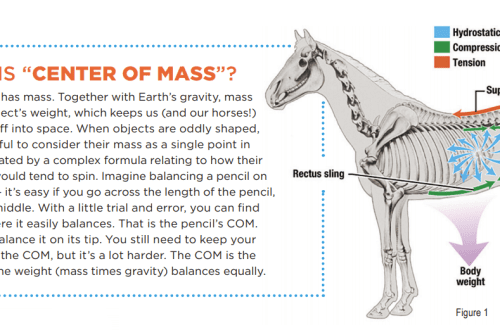
Fright, U-turn on the backside and goodbye? Well, I do not!
Fright, U-turn on the backside and goodbye? Well, I do not!
You are riding, enjoying the nature, the weather and the company of your horse, when suddenly … it suddenly makes a sharp turn, which the ballerina will envy, and quickly runs away in the opposite direction, and you either try to sit in the saddle or find yourself on the ground, and you only it remains to ask the question: “What happened?”
Such situations undermine our confidence – if the horse does not “joke” like this on a regular basis, we understand that we will no longer be able to relax in the saddle … However, given that the root of the problem is the horse’s fear, fear-mongering will not help you.
First of all, you will have to formulate for yourself the law governing the issues of fright and flight: lThe horse should begin to understand that the days when she was afraid of “horse-eaters” are over, and she should just trust you, believe that everything is in order, and she needs to move forward.
It sounds very simple, but we understand that trust is not something that comes in one workout and it will take you a long time to succeed. So what should be done?
Block and close all exits
If the horse has learned to turn around and run, it means that he has found an “emergency door” that is always open and that you can easily exit. So it is up to the rider to keep the door closed and locked throughout the ride. Even after thinking about a turn, the horse should already “hear the clang of the castle” and understand that his only way is only forward or in the direction in which the rider asks to move.
Yes, it will take a lot of effort. At the beginning of your work, the horse may still be able to turn around. But as you gain experience and become more sensitive to the horse, he will only be able to turn 90 degrees, and then, over time, only a few degrees. The important thing is that when the “spin” begins, you immediately turn the horse in the same direction and move it forward.
You may need the help of a more experienced rider, but remember that after he “closes the doors” for the first time, it is up to you to maintain them in the right condition, and there should be no failures.
Be consistent and kind
This kind of retraining of the horse requires a benevolent approach. The horse must trust you. Working on this problem with violent methods will not get long-term results. Yes, you can push the horse forward and drive past the horse-eater, but wouldn’t it be better if he showed confidence and passed by himself, and the two of you could relax while riding?
It is often advised to train a horse on the example of a more experienced and calm horse walking nearby. And this method can definitely work, especially in a situation where you have no other alternative. However, you should not completely rely on how the horse will behave in the company. It is necessary to ensure that the horse feels confident, being alone with his rider.
Remember “Triggers”
Why is the horse running away? She tries to distance herself from that which undermines her sense of security and comfort, which seems unacceptable to her – physically, mentally or emotionally. It can be strained by certain objects (strange trees, gates, signs, puddles), shadows, noise, anything. The horse can also react to tension in the body of the rider (the rider is squeezed, which means “enemies are nearby”).
Whatever the cause, it is important to discover and understand it. Then you can set up controlled actions in a new scenario – the horse will get the opportunity to conquer his fears when you show him that he can trust you and get past the danger without fleeing.
Long term approach
Your main goal is to gain the trust of the horse, and here all means are good. You can train with the horse in your hands, on the ground, relaxing it, walking with it, showing that it is safe to follow your requests, that you are a reliable leader.
You can create small “routes” in a secure fenced area. Pass them on the reins, and then, when the horse feels more confident, mount. The time spent desensitizing your horse will pay off handsomely. You must work with the horse firmly, but gently and compassionately.
Riding a horse that can suddenly become frightened and rush towards the stable is a challenging experience. However, with patience, compassion, and a game plan, you will definitely overcome this problem.
Stick to these tips and remember that it will be much easier if the horse believes you before he believes in his own strength.
Lorna Leeson (source); translation by Valeria Smirnova.





